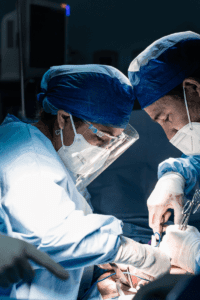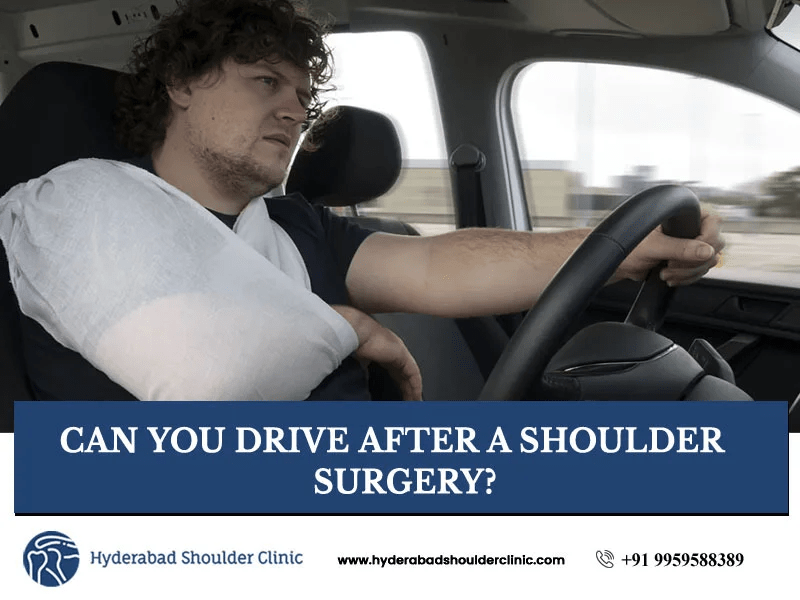
Introduction:
Shoulder surgery marks a significant milestone in the journey toward optimal health, often requiring patients to embark on a period of postoperative recovery and rehabilitation.
While patients may anticipate the physical discomfort and limitations associated with the surgical procedure, one aspect that may catch them off guard is the restriction on driving during the recovery period.
In this article, we delve into the intricacies of driving restrictions following shoulder surgery, shedding light on the reasons behind this precautionary measure, the challenges patients may encounter, and practical strategies to navigate this period of restricted mobility.
By understanding the rationale behind the driving restriction and adopting proactive approaches to address associated challenges, patients can effectively navigate their recovery journey with confidence and resilience.
Throughout this article, we will explore facets of the driving restriction, including its duration, underlying safety concerns, and the impact it may have on patients’ daily lives.
We will examine the importance of compliance with healthcare provider recommendations, alternative transportation options available to patients, and the gradual resumption of driving activities as recovery progresses.
Understanding the Driving Restriction:
Duration and Purpose of Sling Usage:
- Patients undergoing shoulder surgery, especially procedures involving repairs, are typically advised to wear their sling for a minimum of four weeks post-surgery.
- The sling serves a critical role in supporting the shoulder joint and promoting optimal healing by immobilising the affected arm and reducing strain on the surgical site.
Limitations Imposed by the Sling:
- While the sling is essential for facilitating the recovery process, it also imposes limitations on certain activities, particularly driving.
- The positioning of the arm in the sling restricts the patient’s range of motion and interferes with their ability to operate a vehicle.
Rooted in Safety Concerns:
- The restriction on driving following shoulder surgery is not arbitrary but is rooted in genuine safety concerns.
- Driving requires a significant degree of mobility, coordination, and reaction time, all of which may be compromised while wearing a sling.
- Any impairment in these abilities increases the risk of accidents and poses a danger not only to the patient but also to other motorists and pedestrians on the road.
Protection of Patient and Others:
- The primary objective of the driving restriction is to protect the safety and well-being of both the patient and others on the road.
- By adhering to the restriction and refraining from driving until medically cleared to do so, patients can minimise the risk of accidents and complications during the critical early stages of their recovery.
Importance of Compliance:
- It’s crucial for patients to understand the rationale behind the driving restriction and comply with their healthcare provider’s recommendations.
- While the temporary inconvenience of not being able to drive may be frustrating, it pales in comparison to the potential consequences of risking injury or further damage by driving prematurely.
Alternative Transportation Options:
- Patients are encouraged to explore alternative transportation options during the period of restricted driving.
- This may include relying on family and friends for rides, utilising public transportation or ridesharing services, or arranging for delivery of essential goods and services.
Gradual Resumption of Activities:
- As the recovery progresses and the patient’s mobility improves, they will gradually regain the ability to perform activities like driving.
- However, it’s essential to wait until the healthcare provider gives the green light before attempting to resume driving, as premature return to driving could jeopardise the recovery process.
Open Communication with Healthcare Provider:
- Patients maintain open communication with their healthcare provider throughout the recovery process, especially regarding their readiness to resume driving.
- The healthcare provider can assess the patient’s progress, address any concerns or questions, and provide guidance on when it is safe to resume driving activities.
Challenges Faced by Patients After Shoulder Surgery:
Underestimation of Impact:
- Many patients may not fully anticipate the repercussions of the driving restriction until they experience it firsthand.
- Initially, patients may assume they can manage without driving, only to realise the extent of their dependency on transportation for daily activities.
Confinement to Home:
- The driving restriction often results in patients being confined to their homes, unable to carry out routine tasks that require transportation.
- This limitation could be particularly challenging for individuals residing in suburban or rural areas where public transportation options are scarce.
Limited Access to Public Transportation:
- Patients living in suburban or rural areas may face additional difficulties due to limited access to public transportation.
- Lack of reliable transportation alternatives exacerbates the sense of isolation and dependence on others for essential errands and appointments.
Expression of Frustration and Scepticism:
- Some patients may express frustration or scepticism regarding the driving restriction, citing examples of individuals who can drive with only one arm.
- While such cases exist, it’s crucial to understand that driving with a sling presents unique challenges and safety risks that may not be immediately apparent.
Safety Concerns and Risks:
Driving with a sling can impair one’s ability to react quickly and manoeuvre the vehicle effectively, particularly in the event of unexpected situations on the road. This compromised mobility poses significant safety risks not only to the patient but also to other motorists and pedestrians.
Adhering to the driving restriction is paramount to prevent accidents and ensure a smooth recovery process.
Preparing for Restricted Mobility:
To mitigate the challenges posed by the driving restriction, patients can take proactive steps to prepare for this period of restricted mobility.
This includes establishing alternative transportation arrangements, such as carpooling, arranging rides with family or friends, or utilising delivery services for essential items.
Additionally, patients can make their home environment more conducive to recovery by stocking up on groceries and household supplies, arranging for assistance with daily tasks, and modifying their living space for comfort and accessibility.
Staying Active and Engaged:
While the driving restriction may limit outdoor mobility, it’s essential for patients to stay mentally and physically active during the recovery period. Patients can explore activities that can be done with one hand, such as reading, crafting, or engaging in low-impact exercises recommended by their healthcare provider.
Maintaining a positive outlook and also find ways to stay connected with friends and family, and community can also contribute to a smoother recovery experience.
Evaluate Your Driving Abilities After Shoulder Surgery
Before venturing onto public roads post-shoulder surgery, assessing your driving capabilities in a safe and controlled environment is essential.
Here’s how you can gauge your readiness to return to driving:
Choose a Safe Practice Area:
Head to an empty parking lot or another spacious area devoid of traffic to conduct your driving assessment. This provides a controlled environment so you can focus solely on your driving skills without external distractions.
Practice Emergency Manoeuvres:
Perform emergency braking and manoeuvring exercises to evaluate your ability to react swiftly and effectively in challenging situations. Practise sudden stops, swerving to avoid obstacles, and navigating tight turns.
Assess Your Comfort Level:
Pay attention to how comfortable and confident you feel behind the wheel. If you experience discomfort or hesitation while performing certain manoeuvres, it may indicate that you need more time to fully regain your driving skills.
Repeat and Refine:
Repeat the practice exercises as necessary to refine your skills and build confidence. Focus on mastering each manoeuvre until you can perform them safely and consistently.
Gradual Return to Driving:
Once you feel confident in your abilities and can safely execute all required manoeuvres, you may consider returning to driving on public roads. Start with short, low-traffic routes to ease back into driving and gradually increase your driving duration and complexity as you regain confidence.
Conclusion:
In conclusion, while the driving restriction following shoulder surgery may present logistical challenges, it is a necessary precaution to ensure safety and successful recovery. By understanding the reasons behind the restriction and taking proactive steps to prepare for this period of limited mobility, patients can navigate their recovery journey with confidence and peace of mind. By prioritising safety, seeking support from loved ones, and staying engaged in activities that promote healing, patients can effectively navigate the road to recovery and emerge stronger on the other side.


